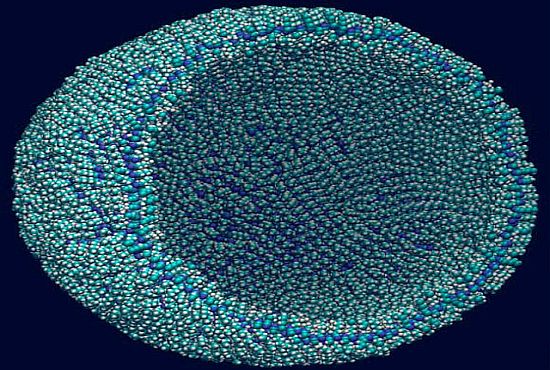
The prospect of finding life in the Galaxy is becoming more real – besides Earth that is.
On one of Saturns Moons-Titan, an atmospheric condition has been observed that is perfect for life. But not as we know it on Earth.

BYPASS THE CENSORS
Sign up to get unfiltered news delivered straight to your inbox.
You can unsubscribe any time. By subscribing you agree to our Terms of Use
Latest Video
Life on earth is geared around water, and that’s what scientists usually look for in their search for ET’s, big or microscopic.
Scientists at Cornell University instead realized that a life sustaining Membrane based on methane is perfectly possible in their area of observation on Titan.
The environment in that area of the universe is stable enough to sustain ‘The Azotosome’, a nitrogen, carbon and hydrogen molecule that loves the freezing temperatures because its environment is methane rather than water.
The image is of such creature should it exist. It would be the size of a virus.
Read more..sci-news.com/space/science-azotosome
The team, led by Dr Paulette Clancy of the Cornell University’s School of Chemical and Biomolecular Engineering, modeled an azotosome – a new type of cell membrane composed of small organic nitrogen compounds and capable of functioning in liquid methane at temperatures of minus 292 degrees Celsius.
On our planet, life is based on the phospholipid bilayer membrane, the strong, permeable, water-based vesicle that houses the organic matter of every cell. A vesicle made from such a membrane is called a liposome.
Thus, many scientists seek alien life in what’s called the circumstellar habitable zone, the narrow band around the Sun in which liquid water can exist.
But what if cells weren’t based on water, but on methane, which has a much lower freezing point?
The azotosome is made from nitrogen, carbon and hydrogen molecules known to exist in the cryogenic seas of Titan, but shows the same stability and flexibility that Earth’s analogous liposome does.
This came as a surprise to Dr Clancy and her colleagues, who had never thought about the mechanics of cell stability before; they usually study semiconductors, not cells.
They employed a molecular dynamics method that screened for candidate compounds from methane for self-assembly into membrane-like structures.
The most promising compound they found is an azotosome based on acrylonitrile – a colorless, poisonous, liquid organic compound present in the atmosphere of Titan.
The acrylonitrile azotosome showed good stability, a strong barrier to decomposition, and a flexibility similar to that of phospholipid membranes on Earth.
Dr Clancy and her colleagues published their results in the journal Science Advances.
Now they plan to demonstrate how these cells would behave in the methane environment.


